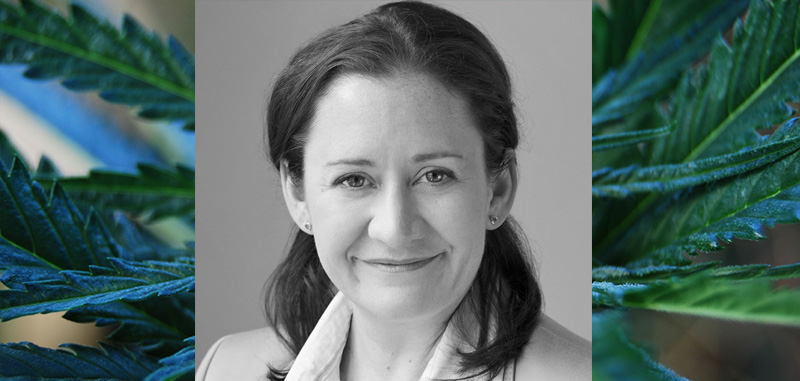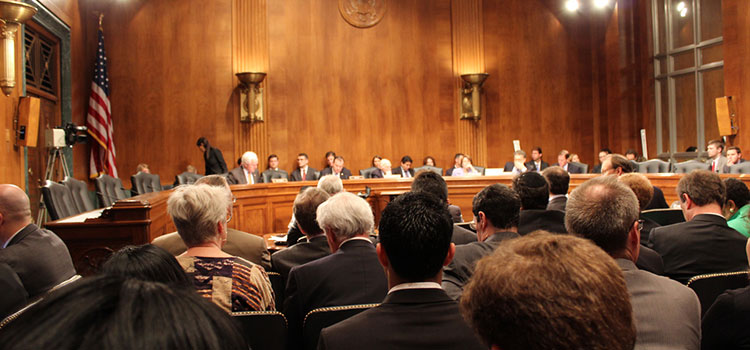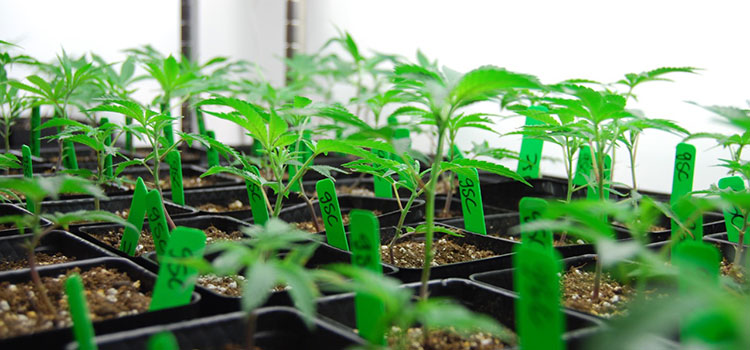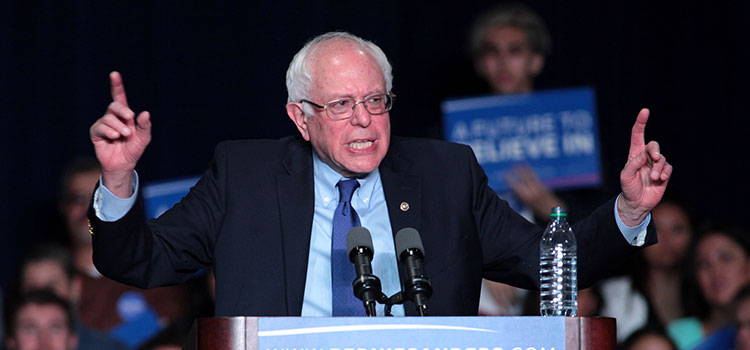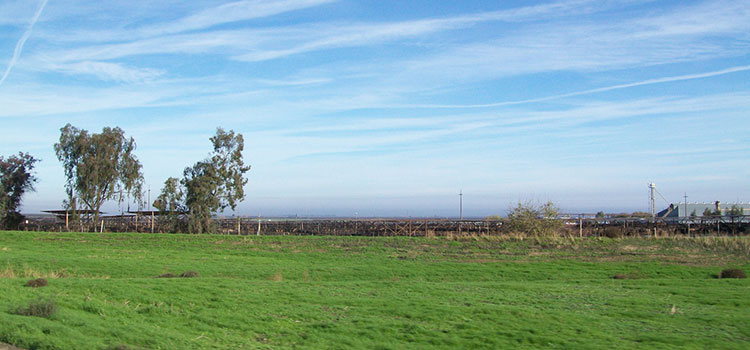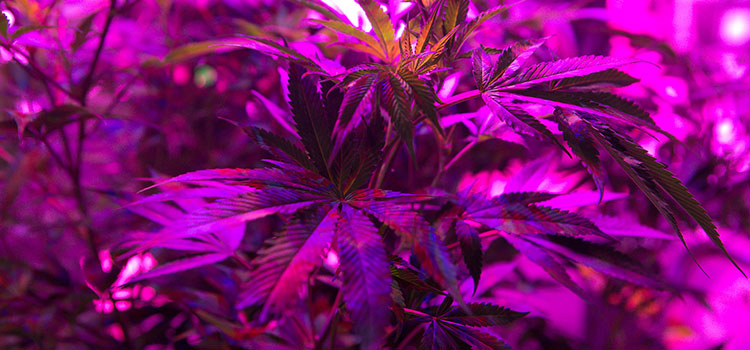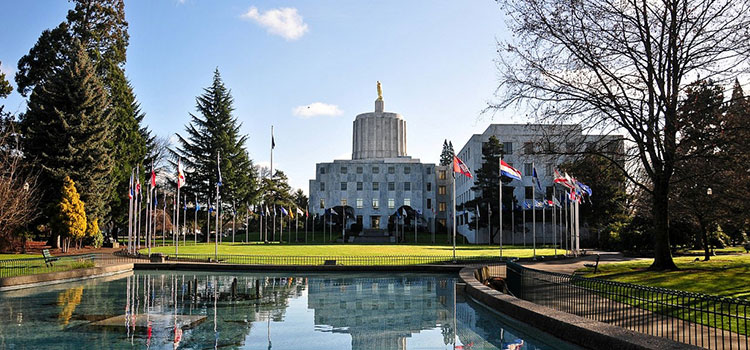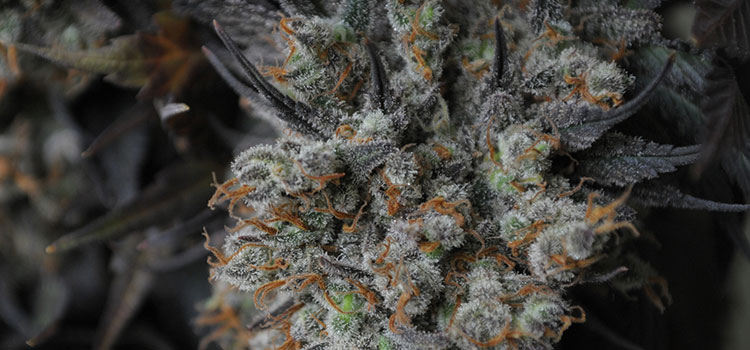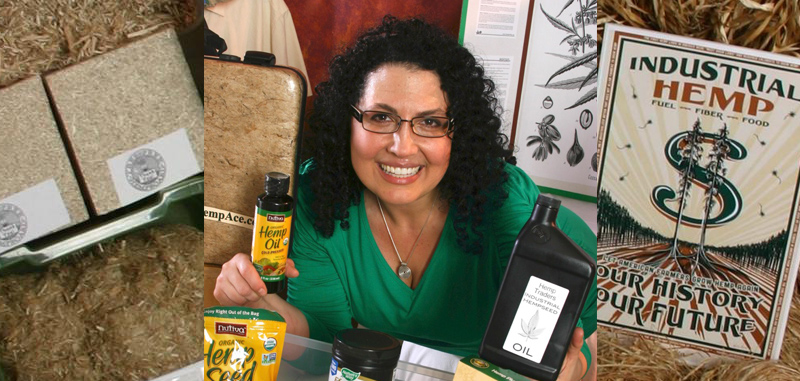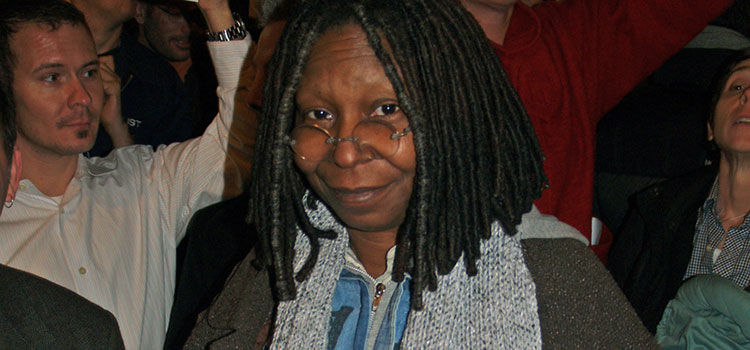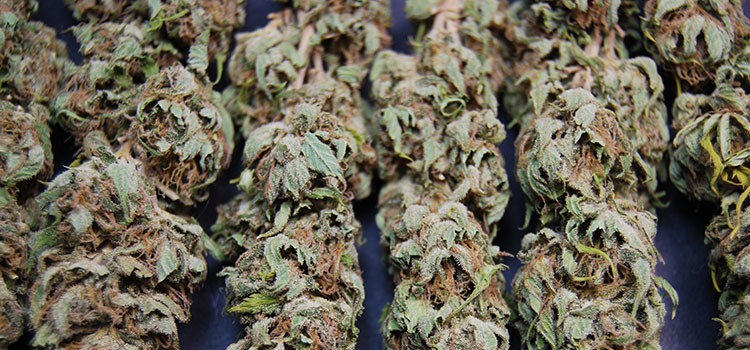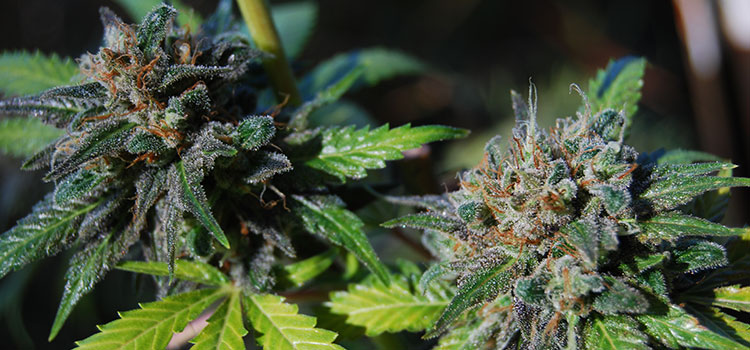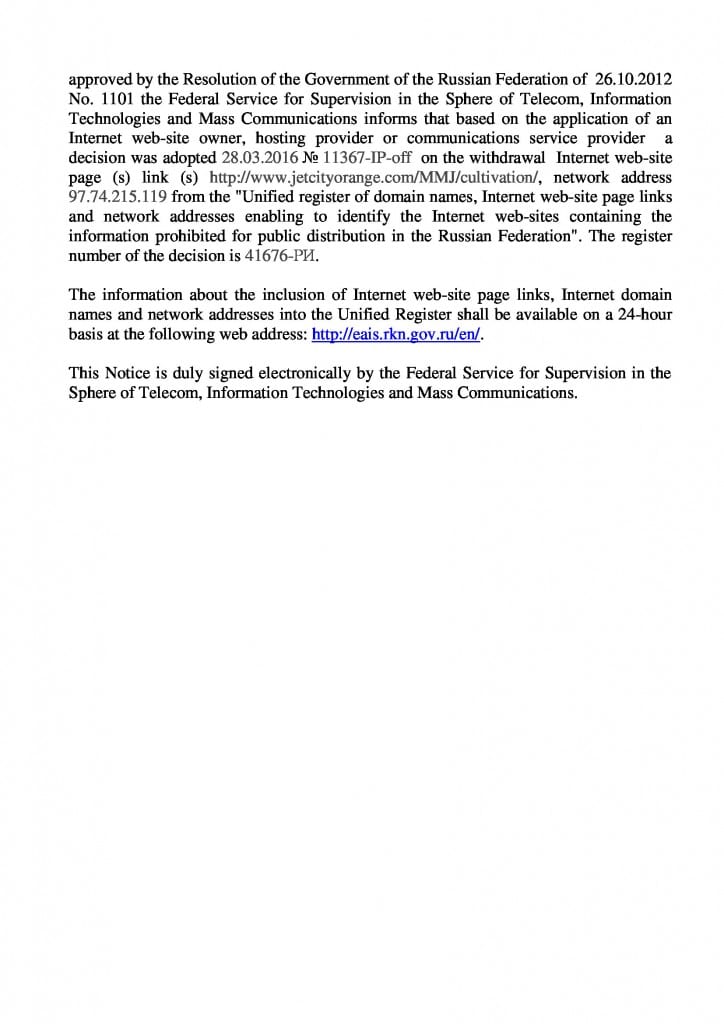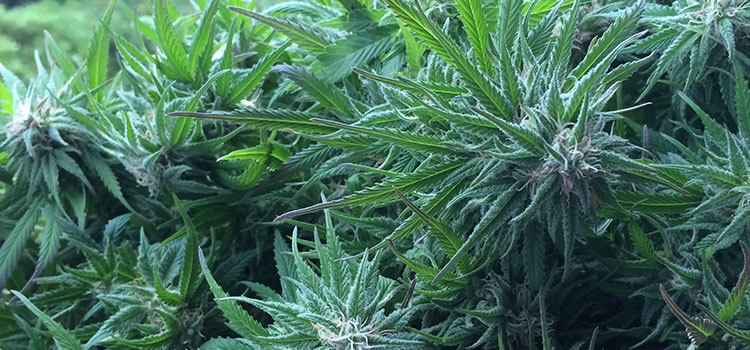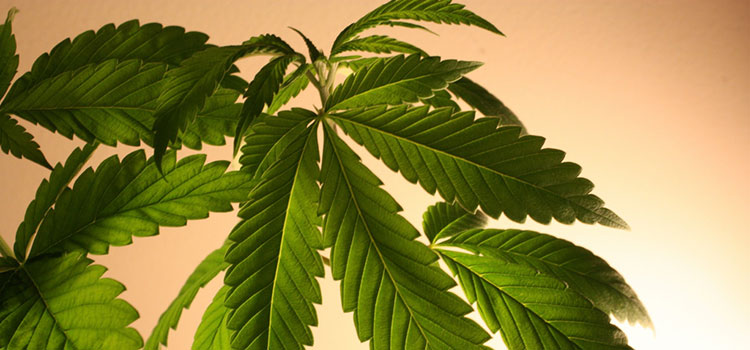Mitzi Vaughn is the managing attorney for Greenbridge Corporate Counsel, a business law firm that works exclusively with cannabis industry clients. She is a founding board member of the National Cannabis Bar Association and is active in both domestic and global drug policy movements. Mitzi recently joined our podcast host Shango Los for a discussion of what it takes to build an interstate brand in the cannabis industry, how cannabis brands should prepare to expand to new territories with different regulatory structures, what some of the inherent risks and complications are, and more.
Listen to the podcast below, or scroll down for the full transcript!
Subscribe to the Ganjapreneur podcast on iTunes, Stitcher, SoundCloud or Google Play.
Listen to the podcast
Read the transcript
Shango Los: Hi there and welcome to the Ganjapreneur.com podcast. I am your host Shango Los. The Ganjapreneur.com podcast gives us an opportunity to speak directly to entrepreneurs, cannabis grows, product developers, and cannabis medicine researchers all focused on making the most of cannabis normalization. As your host I do my best to bring you original cannabis industry ideas that will ignite your own entrepreneurial spark and give you actual information to improve your business strategy and to improve your health and the health of cannabis patients everywhere.
Today my guest is Mitzi Vaughn. Mitzi Vaughn is the managing attorney for Greenbridge Corporate Counsel, a transactional law firm entirely dedicated to cannabis industry clients. She is a founding board member of the National Cannabis Bar Association and is active in both domestic and global drug policy movements. She advises the cannabis industry regarding corporate and transactional matters including brand expansion and multi-jurisdictional cannabis regulation.
Before entering the cannabis industry she was a law school and undergraduate professor. Thanks for being on the show Mitzi.
Mitzi Vaughn: I’m glad to be here Shango, thanks.
Shango Los: Today we’re going to talk about interstate brand development but to give us a better idea of the area of law that we will be delving into today would you give us a brief overview of transactional law and the kinds of services your firm provides?
Mitzi Vaughn: Sure. We provide counsel to the cannabis industry regarding complex transactions and what that means generally are financing, purchasing equity, intellectual property protection. Those types of services because in general you need to know both cannabis regulations and sophisticated legal concepts to be able to integrate them to really serve the industry well.
Shango Los: I can imagine that at the beginning you had so many new clients coming to you and you’ve just been able to say, “Well no we can’t do that. We can’t do any of that,” because in the early days as Colorado and Washington began cannabis licensing business leaders were trying to figure out the fastest way to go national but the laws were intentionally designed to keep individual cannabis companies in their own states so that the Feds wouldn’t come and visit the state. They just want to be left alone to do their own experiment.
What was going on in the early days that you saw that was keeping individual businesses within the boundaries of their founding state?
Mitzi Vaughn: Initially everyone was so heads down and frantic to try to get up and running that really expansion wasn’t an issue. Really it was a lot of interfacing with regulators and a lot of finance deals. How do we get the money to build our business as quickly as possible? That lead to a lot of flawed agreements unfortunately and a lot of relationships that have since fallen apart but once the relationships that were successful move forward and they could take a breath and realize they had their license to produce and process cannabis. They had the money now to grow their business even though they were constricted by regulations. That’s when they come and they say, “Okay what’s next? We’ve gotten past the biggest barrier we thought we had, which was just getting licensed. What do we do now?”
Shango Los: I would think that being the managing attorney at your firm and you are kind of the filter for clients- I can imagine that in the early days you had a lot of people coming to you that are pretty much what we lovingly call Yahoos you know? People who don’t really have the acumen, the investment, or the know-how to get this done. You were spending a lot of time filtering through who the best clients for your firm was going to be.
Mitzi Vaughn: The best clients were the ones who want to learn. It’s a very complex area. I certainly never, and neither has anybody at my firm, hold it against somebody for not understanding how these regulations interact with typical business transactions. It’s a very complex area. The kind of clients we look for are the ones who appreciate that and who are willing to be educated and who are willing to then integrate that knowledge into making their business more successful.
We have a lot of clients who come from very sophisticated business backgrounds who have no idea when they come into the industry how incredibly restrictive the regulations are.
Shango Los: Early on, especially in Oregon and Washington, the goal was to keep the companies within the states but now we still have got a bunch more states that are moving towards normalization. What are some of the strategies used at the state level to keep the players within the state and to keep outside influences out?
Mitzi Vaughn: Initially there was so much fear of the federal government, especially in Washington and Colorado because we were really at the forefront of figuring out whether or not this experiment was going to succeed, whether or not the Feds were going to lose patience and come in and somehow shut us all down. In an abundance of caution, regulators in those states really were timid and anti anything that was from out of state whether it be finance or brand or really anything else because they didn’t want to have any appearance of violating that interstate commerce restriction.
Regulators had a few choices. Regulators could, A, simply draft a regulation that would restrict it in the same way that they do for out of state financing in many jurisdictions or, B, because they’re regulators and they have a huge amount of discretion, they can just say no and they did for a long time. For example in Washington I really had to go to the LCB and explain what a licensing agreement was and what it wasn’t and why it didn’t run afoul of Washington regulations.
That was a very slow and tedious process as you can imagine because they don’t have to change if they really don’t want to so you have to convince the regulators that it’s first not a violation of the regulations and second actually in the best interest of the industry to adopt these models.
Shango Los: I can almost imagine regulators with their finger on the button to allow interstate commerce, shaking it and listening to you going, “Are you sure we’re not going to get in trouble with the Feds by doing this?” Because nobody wants to destroy their in-state experiment but at the same time they don’t want to be left behind either.
Mitzi Vaughn: Exactly.
Shango Los: Over time, creative attorneys and business people began to what I think of as cracks in the state policy but now after listening to you it sounds like it’s more like people are getting more educated. Even Oregon decided to just go ahead and start allowing out of state investment. What do you see as the tidal change moment when the general vibe changed from “Oh my God we’ve got to keep everything in the state” to “Well let’s start considering how we might be able to play together”?
Mitzi Vaughn: It would be everybody watching Washington and Colorado frankly. Two very different regulatory regimes struggling through a patchwork of guidance from the federal government and trying to make cannabis regulation work. Everybody else got to sit back and watch Washington and Colorado take the risk. Once it appeared that the federal government was going to let it go the real sea change was further legalization. Oregon. Alaska. It’s going to keep coming.
The more that states legalize the more comfortable the regulators within states will be in, for example, allowing out of state financing.
Shango Los: That makes sense. For most of us interaction between the state and the federal level seems to be kind of a black box where we’re trying to do things at the state level and we’re just hoping that it doesn’t trigger big daddy federal government. At the same time we’re not getting a lot of feedback other than the Cole 2 memo which while we understand it is also vague on a whole lot. In the last minute or so, can you give us an idea of what’s it like for an attorney like you to be giving advice to your clients but also trying to read the tea leaves of the federal government about what they would tolerate?
Mitzi Vaughn: It’s a lot of work. It’s a lot of research. It’s a lot of keeping our fingers on the pulse of what’s going on in DC and it’s also making sure that clients are educated. Even though cannabis is federally illegal there are still a whole host of regulatory laws that you need to follow even though you’re a cannabis business.
Shango Los: Right on. We’re going to take a short break and when we come back we’re going to talk about how to do interstate branding correctly. You are listening to the Ganjapreneur.com podcast.
Welcome back. You are listening to the Ganjapreneur.com podcast. I am your host Shango Los and our guest this week is attorney Mitzi Vaughn of GreenBridge Corporate Counsel. Before the break we were talking about the early days of interstate commerce for cannabis and essentially how there wasn’t any even though people really wanted to try it.
You talked a lot about how the regulators had to warm up the idea over time and with education. In this segment we’re going to talk more about how things are working correctly now and more importantly how entrepreneurs can set up their agreements to do it the right way so that they don’t injure their businesses.
With the doors to national brands starting to open and I guess I should be specific. We’re talking about cannabis producers and retailers. We’re not talking about non-cannabis-cannabis companies like selling grinders or vape pens or things like that. Those kinds of companies that don’t handle the actual plant have got to deal with a whole lot less regulation. If you’re handling the plant and you’re trying to set up a licensing agreement in another state where you can extend your brand and bring back profits. There’ a whole host of issues.
Mitzi I know that you have dedicated a great deal of time both educating the regulators and figuring out how to do this right. Would you break down what actually makes up a successful intellectual property agreement today and kind of give the path forward for entrepreneurs who are listening who are excited about taking their brand nationally?
Mitzi Vaughn: Of course. Intellectual property licensing agreements are the vehicle that entrepreneurs are using as you said to expand across state lines but also to expand their businesses in state. You are faced with state regulations that may restrict the amount of product that you can create. Licensing can help you expand under those types of regulations.
An intellectual property licensing agreement consists of- First of all, let’s parse it. Intellectual property in this case means your product. Let’s use edibles as an example because it’s the easiest to explain. Your intellectual property if you’re an edible producer is not only that brownie, the recipe that created that brownie, but it’s also your brand. Usually we’re thinking about brands when we talk about intellectual property licensing agreements but that’s only half of it.
It’s what’s inside the package and it’s what’s outside of the package. When you are licensing, you are licensing someone’s ability, if it’s an edible for example, to use your recipe and to use your brand, your mark, your trademark in commerce and you are not the one actually producing it or selling it. These agreements lay out how that relationship will work because as somebody licensing your product, licensing your brand, your number one concern is not just profit. It’s maintaining what you have built.
When you build this wonderful brand and then you hand over the rights to it to somebody else, you have to make sure that that somebody else is doing it right or they’re going to destroy everything that you have built. You have to make sure that you have quality standards that those people are going to adhere to. For example they use the right kind of packaging. If you walk into a retail outlet and see your edible in substandard packaging it’s going to affect your brand out there being viewed by the consumer.
In the same way that you want to make sure that the brownie is the same quality, consistent, and of the same quality every time you want to make sure the packaging is as well because as we know the brand, a lot of it, is the look. It’s not only what’s inside. It’s what’s outside. That’s the first part of this whole equation.
The second part is policing it. In order to maintain your brand you need to not only make sure that your trademark isn’t being used by others improperly because then you will lose the protections that you have gained with a trademark. You need to make sure like I said the quality and consistency are there. This is where people are falling into a trap because when you are too controlling of a licensee- In other words, if you go into their kitchens and tell them what ovens to use, if you go in there and tell them what supplies they need to buy, if you go in there and tell them how to hire people and how to train them, you have crossed the line into franchise law.
That is happening all over the industry right now.
Shango Los: I think that a lot of the entrepreneurs, after they set up their first business, see their new location whether it be on the other side of the state or in the state next over that it’s like “Oh, we’re setting up a new office.” What you were being very clear about is that it is not your new office. You’re actually giving rights to produce to someone else. Now I’m hearing that I might actually be getting in trouble by trying to over-police the folks that I’ve licensed my intellectual property to.
I bet you that’s kind of a sneaky fine line. Where is the line between licensing and being specific about how I want them to represent the brand versus going too far and sinking into franchise?
Mitzi Vaughn: The real key here is the FTC’s definition of a franchise. There’s three prongs but for this discussion, the most important one is significant control or assistance. This is what is tripping people up right and left. It’s scary when I read about these agreements because you see repeatedly we go in there and we install all of the equipment and it’s just add weed and go, for example, is one that I just recently read. You know it’s plug and play.
That’s a franchise. There’s no question that that is a franchise. Even though you call that agreement an intellectual property agreement it’s not because you have wandered into franchise land and that’s important because the federal requirements and state requirements for franchise law compliance are burdensome. There’s a ton of disclosures. If you accidentally franchise you’ve got fines you need to deal with. There’s a lot of compliance that comes along with the franchise that makes it very inadvisable to enter into not to mention you want to do everything you can to keep federal oversight away from you because we are dealing with a federally-illegal product.
Shango Los: I see. As soon as you break into franchise you’ve got two issues. Number one, it’s overly burdensome in the reporting but also suddenly you are being regulated by the Feds because you’re a franchise and you start running into legal issues that way. You really want to stay lower on the radar by having an intellectual property licensing deal which can be handled locally versus becoming a franchise where suddenly you have to bring the Feds in and you’re going to have them up in your business.
Mitzi Vaughn: Right. You can license your intellectual property anywhere. There’s no restriction- There are restrictions in the cannabis regulations but aside from that it’s not that you crossed state lines and you trigger federal oversight in your intellectual property licensing agreement. What it is is that you stay altogether away from franchise law. That makes sure that there is no federal jurisdiction over that agreement.
When it comes to franchise there is no intellectual property licensing, regulatory regime, at the Federal Trade Commission. That’s for starters. Earlier you asked where’s the line and I didn’t really address your question and I’d like to do that because the line is not only should you not be providing this significant control and assistance by going into their operation but the way that you police the quality of your product and the packaging is by doing point-of-sale testing.
You don’t go in and find out how they’re making it. You make sure that the end product is what it needs to be. As long as the end product is what it needs to be you can’t tell them how they do it.
Shango Los: Mitzi that’s not how anybody’s doing it.
Mitzi Vaughn: I know.
Shango Los: I talk to these people all the time and they’re going to the licensees. They’re going all through. They’re teaching their staff.
Mitzi Vaughn: I know. It’s happening everywhere. Unfortunately like I said the information just isn’t out there. You need a franchise attorney or somebody who’s familiar with franchise laws to even be able to identify this issue. In the same way you wouldn’t have a plastic surgeon take out your gall bladder you wouldn’t have one of these agreements drafted by an attorney who wasn’t familiar with franchise and intellectual property laws. They are not the same. Or that attorney needs to educate themselves if an attorney is even involved.
I know some people have just kind of written it up themselves. You see the whole spectrum. The definition of a franchise is very clear and significant control or assistance is a sliding scale but there are some things that are for certain significant control or assistance.
Shango Los: I can almost feel so many audience members faces just going white with “Oh my God” after hearing that. Right now we need to take another short break. We’ll be right back. You are listening to the Ganjapreneur.com podcast.
Welcome back. You are listening to the Ganjapreneur.com podcast. I’m your host Shango Los and our guest this week is attorney Mitzi Vaughn of GreenBridge Corporate Counsel. Before the break, Mitzi was breaking it down for everybody that you cannot have an exceptional amount of control over the folks that you license your intellectual property to or else you’re going to get in trouble. I know from talking to these entrepreneurs and being involved with these deals as a consultant myself that almost nobody is doing it correctly by Mitzi’s definition.
Mitzi the impact of course is what happens? What’s the fallout when people set up these agreements incorrectly? Who is it that finds out who is going to enforce it and what does the enforcement look like?
Mitzi Vaughn: That is an excellent question. Best case scenario is that nobody finds out and that everybody trucks along who’s already done this and they don’t have any real ramifications associated with their accidental franchise. Worst case scenario is that the Federal Trade Commission comes in and slaps a bunch of fines retroactive and prospective. You can be banned from every having a franchise which might be okay because you shouldn’t be having one in the first place probably.
There are laws that apply to- You have to register your franchise. There are extensive disclosures so you would have to go back and all of those things or simply fold. It could just end your business because it’s too burdensome for you to go back and undo all that you’ve done. Those are some of the ramifications.
Shango Los: Is the FTC on a hunt for these folks right now or is it just like if you’re a bad actor they’ll use this as an excuse to close you down?
Mitzi Vaughn: Yeah that’s an excellent question because the question then becomes how do I even get on their radar? You may not. If you upset one of your licensees however that licensee could go to the FTC and rat you out because if the FTC comes in everything will be construed in favor of the licensee or in this case the franchisee and against you as the franchiser.
If your licensee gets disgruntled and wants to get at you for some reason the FTC would be the route to go. Not to mention I’m not sure because we don’t have any precedent of what the FTC would do in connection with a cannabis business that violated- How the FTC and cannabis interact is a real unknown right now.
Shango Los: It’s interesting because most of the time on the program we talk about the entrepreneurs being at the forefront of these new technologies and these new extraction techniques and cannabis medicine all the time, but it’s interesting to hear from your perspective how law is right on the fringe as well. You’re delving into this outer space without precedent and you’re kind of making up the law as you go. You must have to really explain risk assessment over and over again to your clients because there is no black and white in a lot of these cases.
Mitzi Vaughn: That’s exactly right. In general when we’re talking about risk versus reward you have to look at things in these agreements and perhaps it’s that some of these entrepreneurs out there have decided that their risk is worth the reward in crossing this franchise line. Maybe it isn’t necessarily ignorance. It is definitely part of our counsel as attorneys at our firm that anything that might put you on the federal radar that is unnecessary is a bad thing.
You need to comply with all of those federal laws. You have security laws. That’s something that we discuss on a regular basis with people. But if you can exempt yourself from a federal law you should do it.
Shango Los: Let’s talk about getting my money. I licensed my intellectual property to a third party and I explained to them how I want things to go and I like their product that they’re putting out so everything is going well so far. I’m not a franchise but I do want to get paid. Let’s say that I set up my agreement for a percentage of sales revenue. Since banks are not handling cannabis money how does the money find its way back to me in another state?
Mitzi Vaughn: First of all you generally wouldn’t set it up as a percentage because that would make you an owner and trigger a lot of in state residency requirements. I just have to throw that in there. In terms of payment generally the parties that are involved in these transactions or the licencors, the people who own the intellectual property, have bank accounts.
They are larger entities. They been able to- They needed that banking to expand to where they are. They’ve been able to access that banking through either organizations that have offered their service publicly or otherwise. It’s just like any other transaction. Because the money come across state lines does not necessarily make it any more complex than paying your vendors down the street.
Shango Los: I see. It’s more about for the licencor to already have an established relationship with a bank that they like and then after that the transferring is much easier at that point. The point is just to make sure you get a good bank to work with at square one.
Mitzi Vaughn: Well one can argue that- Let me back that up. Generally we advise that companies form a separate entity to license their intellectual property and so that company is not actually touching the product although it is obviously cannabis related. That can also facilitate these kinds of transactions.
Shango Los: Interesting. It sounds like that little part there just on the legal technicalities of that could be it’s own show. Again, we are out of time. Mitzi thank you so much for being on this show. This is an interesting topic area where I hear 100 different opinions from 100 different people and after talking to you I find out that almost none of them are correct. I really appreciate you being on this show to share your experience.
Mitzi Vaughn: Thank you so much for having me Shango. I appreciate it.
Shango Los: You can find out more about Mitzi Vaughn and Greenbridge Corporate Counsel at their website GreenbridgeLaw.com. You and find more episodes of the Ganjapreneur podcast in the podcast section at Ganjapreneur.com and in the Apple iTunes store. On the Ganjapreneur.com website you will find the latest cannabis news, product reviews, and cannabis jobs updated daily along with transcriptions of this podcast. You can also download the Ganjapreneur.com app in iTunes and GooglePlay.
You can also find this show on the “I Heart Radio Network” app. Bringing the Ganjapreneur podcast to sixty million mobile devices. Do you have a company that wants to reach our national audience of cannabis enthusiasts? Email grow@ganjapreneur.com to find out how. Thanks to Brasco for producing our show. I’m your host Shango Los.
End
